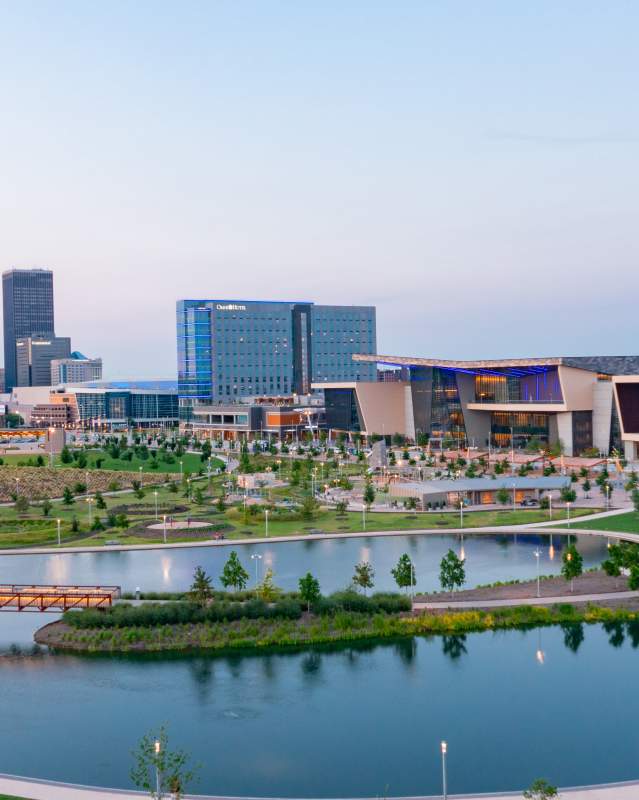Audience will get inside look at contemporary art practices
This summer, join Oklahoma Contemporary online for Studio-in-Place: Select Studio School instructors will spend one month working on — and digitally sharing — projects related to themes of creativity, community and resilience in the time of COVID-19. Through biweekly interviews, livestreamed videos and other engaging content, you’ll get an inside glimpse into the creative working processes of contemporary artists at home and in Oklahoma Contemporary’s studio facilities.
This project, along with Camp-in-Place (weekly DIY #AtHomeArt projects produced for Oklahoma Contemporary’s blog, New Light), allows Oklahoma Contemporary to continue paying some of the teaching artists whose camps or classes were canceled during the public-health crisis.
“Studio-in-Place will not only give a behind-the-scenes look into the artists’ practice when they're quite literally trapped in the confines of their own studios, but it will also really allow us to address contemporary issues like COVID-19,” said Jaime Thompson, Oklahoma Contemporary’s new director of education and public programs. “Both artists are exploring their own concepts tied to resilience or creativity in the strange new world we're living in, and creating opportunities to engage via social practice techniques with projects that they're doing during their time with us.”
In the weeks since Oklahoma Contemporary’s grand opening was postponed by the pandemic, many of the organization’s programs have moved online. Two artists per month will take on the Studio-in-Place digital residencies this summer. June’s featured instructors are Calvin Pressley and Tess Elliot.
Pressley is a Studio School instructor who primarily focuses on subjective portraiture in painting and drawing. His project, Connected Conversations, will explore new ways we can make meaningful connections with one another during this period of social distancing. Pressley will use video-conferencing software to hold conversations with community members, in the arts and beyond, about how COVID-19 has impacted their daily lives. During these sessions, Pressley will create sketches of the interviewees that he will then translate to oil-painted portraits. Combining inspiration from traditional artists with contemporary approaches, these finished paintings will capture more than just the physical features of the interviewees’ faces — they will express the subjects’ COVID-19 experiences as well as their energy and spirit.
“In my eyes, I think this is an opportunity to have a conversation about what a portrait of somebody really is,” Pressley said. “It’s not just a picture of somebody's face and the physical presentation of that person. It’s more about capturing the ambiance of that person. If there's a likeness in the final product, that's great. But ultimately, through the conversations, I want to be able to create an artwork that contains that person's energy, so to speak, in a way that's more than just a picture of them.”
In Infinite Oaks, Elliot wonders, “How do we imagine futures through these emerging technologies? That’s the spectacle or the wonder of them: They're so new that it makes you think about the future, and what they can bring for the future.”
She will use her background in painting, sculpture and technology to create augmented-reality (AR) experiences to virtually reintroduce blackjack oaks, post oaks and other native tree species to the Cross Timbers region of Oklahoma. The project will result in an AR app, free and accessible to anyone with a tablet or smartphone, which aims to connect the community to native ecology and each other through a shared digital experience. Elliot’s app will use GPS coordinates to grow digitally modeled, painted and animated woodlands within real spaces across Oklahoma’s central region.
“Infinite Oaks is optimistic, but it’s also caged around this desire to see these changes in the real world,” the artist said. “I would love to see more natural spaces and more protection of the native ecology of the region. And so I want to provide this kind of opportunity for the public to be able to experience a kind of utopian version of it. In order to ask: What do we want of technology? What do we want of our future? What do we value?
Elliot and Pressley, as well as future Studio-in-Place artists, will work with Oklahoma Contemporary’s Communications staff to create unique digital content that helps them engage the public with their respective projects and provides new opportunities to inspire, entertain and educate Oklahoma Contemporary’s audience.
“While we can’t currently bring the people to our building and our mission, Studio-in-Place gives us new ways to bring our mission — to encourage artistic expression in all its forms — to the people,” said Lori Brooks, director of communications. “From behind-the-scenes looks at how apps are made to portrait tutorials, Studio-in-Place will allow our visitors and viewers brand-new ways to engage with contemporary art from the comfort and safety of their homes.”






